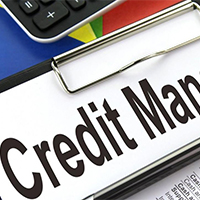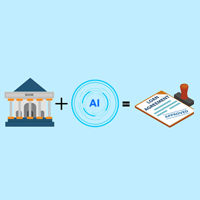
Alternative Data in Digital Lending: Game-Changing Strategy for Modern Financial Institutions
In today’s rapidly evolving financial landscape, digital lending is undergoing a major transformation. One of the most significant catalysts behind this change is alternative data. As traditional credit scoring systems fail to capture the full financial potential of individuals and businesses, especially in emerging markets, alternative data is stepping in to bridge the gap.
From social media activity and utility bills to mobile wallet transactions and e-commerce behavior, alternative data is opening new doors for lenders to assess creditworthiness more accurately. When combined with the latest microfinance software, this innovative approach is helping financial institutions reduce risk, expand their customer base, and improve decision-making like never before.
This blog will explore how alternative data in digital lending is redefining the credit ecosystem, empowering microfinance institutions, and setting the stage for a more inclusive and dynamic financial future.
What Is Alternative Data in Digital Lending?
Alternative data refers to information that is not traditionally used by credit bureaus to assess a borrower’s financial health. Unlike conventional data—such as credit scores, income statements, and loan repayment history—alternative data taps into non-traditional sources, including:
- Utility and phone bill payments
- Rental history
- Mobile money transactions
- Social media behavior
- E-commerce purchase history
- GPS and geolocation data
- Employment or gig economy history
The goal is to form a 360-degree view of the borrower, especially those who are new-to-credit (NTC) or lack a strong formal credit trail.
Also read: Understanding the Impact of AI in Microfinance Loan Approvals
Why Traditional Credit Scoring Falls Short
Traditional credit scoring models are largely designed for individuals and enterprises with a long history of formal borrowing. But in many countries—especially across Asia, Africa, and Latin America—millions of people are unbanked or underbanked. These individuals may not have taken loans before, yet they could still be responsible earners who pay rent, utility bills, and mobile bills on time.
In such scenarios, traditional models fail to reflect true creditworthiness, leading to:
- Higher rejection rates
- Lost lending opportunities
- Lower financial inclusion
This is where alternative data becomes a game-changing tool, offering lenders the ability to tap into a previously invisible market.
The Role of Alternative Data in Microfinance
In the microfinance sector, where the primary objective is to provide small loans to underserved communities, using alternative data can transform lending operations. Traditional underwriting models often exclude rural borrowers, gig workers, and informal business owners.
However, with access to data such as:
- Mobile phone usage
- Cash flow from mobile wallets
- Digital payment behavior
- Community reputation on social platforms
Microfinance institutions can:
- Make faster and fairer credit decisions
- Reduce the need for manual verifications
- Expand their services to rural and semi-urban areas
- Minimize non-performing assets (NPAs)
Combining alternative data with the microfinance software ensures that even first-time borrowers have a chance to access capital responsibly.
Also check our article: How to Secure Your Lending Platform Against Cyber Threats
Benefits of Using Alternative Data for Digital Lending
Here’s why alternative data is a game-changer in digital lending:
1. Enhanced Credit Risk Assessment
By layering alternative data with traditional data, lenders can create more accurate credit profiles, reducing the chances of defaults.
2. Access to the Unbanked and Underbanked
Billions of people globally are still outside the formal banking system. Alternative data enables lenders to tap into this market, promoting financial inclusion.
3. Faster Loan Approvals
Machine learning models using real-time alternative data can automate underwriting, cutting down approval times from days to minutes.
4. Cost Reduction
Digital onboarding and data-driven assessments reduce operational costs and paperwork, making micro-loans viable even at scale.
5. Better Fraud Detection
Using behavioral analytics, lenders can flag unusual activity or suspicious patterns early, improving fraud control.
Challenges of Implementing Alternative Data
While promising, alternative data isn't without its hurdles:
⚠️ Privacy Concerns
Using personal data such as location or social behavior can raise data privacy and ethical concerns. Compliance with data protection laws like GDPR and India’s Digital Personal Data Protection Act (DPDP) is essential.
⚠️ Data Quality and Reliability
Some alternative data may be noisy or unstructured, making it challenging to extract meaningful insights without robust software.
⚠️ Bias and Discrimination
There is a risk that algorithms may inherit or amplify social biases. Therefore, transparent and fair AI models are critical.
⚠️ Infrastructure Barriers
In remote areas, access to digital devices, stable internet, or proper documentation may still be limited.
To overcome these issues, lenders must partner with trusted technology providers and use regulatory-compliant lending software with strong data governance capabilities.
How the Latest Microfinance Software Supports Alternative Data
The successful use of alternative data depends heavily on advanced digital tools. Today’s top microfinance software integrates artificial intelligence (AI), big data, and API connectivity to harness the power of alternative data.
Here’s how top-tier software makes it work:
- ✅ Real-time Data Integration: Pull data from telecoms, e-wallets, and third-party APIs.
- ✅ AI-Powered Credit Scoring: Use machine learning to build predictive credit models from structured and unstructured data.
- ✅ Customizable Workflows: Tailor lending processes to different borrower segments.
- ✅ Automated KYC/AML Checks: Speed up verification using government and private data sources.
- ✅ Mobile Lending Apps: Empower field agents and customers with smartphone access.
- ✅ Analytics Dashboards: Track borrower behavior, repayment trends, and portfolio performance in real time.
By using such systems, microfinance institutions can scale efficiently, serve more clients, and reduce risk without compromising on speed or accuracy.
Global Examples of Alternative Data in Action
📍 India – Fintechs & NBFCs
In India, NBFCs and fintech lenders are increasingly using Aadhaar-based KYC, UPI transaction data, and mobile usage patterns to offer instant personal loans. For example, startups like KreditBee and CASHe rely heavily on non-traditional data.
📍 Africa – Mobile Wallet Insights
In countries like Kenya and Nigeria, lenders like Tala and Branch evaluate mobile money usage patterns to assess borrower behavior. SMS records and phone metadata have been revolutionary in reaching the underserved.
📍 USA – Rental History in Credit Scoring
Fannie Mae and Experian have started using rental payment histories to determine creditworthiness, helping young renters build a credit score.
These examples prove that alternative data, when backed by modern technology, holds immense potential across diverse markets.
What the Future Holds
With the continued growth of digital footprints, alternative data is here to stay. Financial institutions that embrace this shift will be better positioned to:
- Expand into untapped markets
- Reduce risk exposure
- Deliver customer-centric lending solutions
- Drive long-term profitability
However, the future of alternative data also depends on building ethical frameworks, regulatory support, and cross-industry collaboration to ensure fairness, transparency, and security for all.
GTech Web Solutions: Your Partner for Smart Microfinance Growth
For microfinance institutions looking to integrate alternative data seamlessly and operate smarter, GTech Web Solutions Pvt. Ltd. offers a powerful edge.
As a trusted name in fintech innovation, GTech provides the latest microfinance software that is:
- Fully customizable
- AI and data analytics-enabled
- User-friendly for both field and office staff
- API-ready for alternate data integrations
- Secure and compliant with Indian and global regulations
Whether you're a startup MFI or a well-established NBFC, GTech Web Solutions equips your business with future-ready tools to grow efficiently and ethically in the digital lending ecosystem.
Conclusion
The integration of alternative data in digital lending is revolutionizing the way financial institutions evaluate and serve customers. By breaking the barriers of traditional credit systems, it fosters financial inclusion, reduces risk, and boosts operational efficiency.
When combined with the latest microfinance software, the possibilities are endless.
If you're ready to embrace the next generation of lending, GTech Web Solutions Pvt. Ltd. is here to power your journey. Their industry-leading microfinance platforms ensure you're not just keeping up with the future—but leading it.


